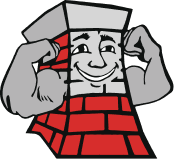The Importance of NFPA 211 and Chimney Codes
 Homeowners with fireplaces can help ensure safe wood-burning by making it a priority to comply with NFPA 211. The National Fire Protection Association (NFPA), founded in 1896, is devoted to eliminating loss caused by fire, electrical, and related hazards.
Homeowners with fireplaces can help ensure safe wood-burning by making it a priority to comply with NFPA 211. The National Fire Protection Association (NFPA), founded in 1896, is devoted to eliminating loss caused by fire, electrical, and related hazards.
The global, nonprofit organization provides information and guidelines that help to eliminate fatalities, injuries, and economic loss caused by fire-related hazards. NFPA 211 provides the standard codes for fireplaces, chimneys, vents, and other solid fuel-burning appliances.
What are Chimney Codes?
Chimney codes are the standard codes that should be met in order to ensure that the operation of fireplaces and other fuel-burning appliances is safe. The codes address the following and more:
- Safe removal of flue gases
- Proper installation of solid fuel-burning appliances
- Proper construction of chimneys
- Correct installation of fireplaces, chimneys, and venting systems
As a homeowner, you don’t need to learn the codes yourself. All you need to do is hire chimney sweeps certified by the Chimney Safety Institute of America (CSIA) to install, routinely inspect, and clean your solid fuel-burning appliances. The NFPA’s standard codes are regularly updated, and certified chimney technicians stay informed about all of the latest requirements that help to ensure your safety.
Dangers of Non-Compliance
One of the most common hazards that occurs as a result of fuel-burning appliances not being installed according to chimney codes is pyrolysis. Pyrolysis is when combustible materials are repeatedly exposed to high temperatures, such as those created by a fireplace or wood stove, and the molecular structure of the material is altered to the extent that it can suddenly ignite and cause a residential fire. Pyrolysis can occur if your flue lining is cracked or crumbling and fails to protect the wood framing surrounding your chimney from excessive heat. When fuel-burning appliances such as wood stoves are installed closer to combustible materials than the distance indicated by the manufacturer, pyrolysis can occur.
Annual Inspections
The NFPA and the CSIA both recommend that venting systems be inspected annually. An appliance can start out being up to code, but age and damaging conditions cause deterioration. When a chimney flue has even the smallest crack, it is necessary to repair or replace the flue before using the fireplace or wood stove again.
 An obstructed chimney is also a danger. There are numerous potential causes of a blocked chimney, including debris from a deteriorating flue and an excess buildup of creosote. The chimney draft is hindered by obstructions and, as a result, toxic carbon monoxide could enter your home. Carbon monoxide is known as the “Silent Killer” because it is odorless and invisible. Victims of carbon monoxide poisoning often don’t realize that they’re affected until they begin suffering symptoms of the exposure and it’s too late for them to escape to safety. Because of the danger of carbon monoxide, it’s essential for homeowners with fuel-burning appliances to have operational carbon monoxide detectors on each level of the home and outside each bedroom.
An obstructed chimney is also a danger. There are numerous potential causes of a blocked chimney, including debris from a deteriorating flue and an excess buildup of creosote. The chimney draft is hindered by obstructions and, as a result, toxic carbon monoxide could enter your home. Carbon monoxide is known as the “Silent Killer” because it is odorless and invisible. Victims of carbon monoxide poisoning often don’t realize that they’re affected until they begin suffering symptoms of the exposure and it’s too late for them to escape to safety. Because of the danger of carbon monoxide, it’s essential for homeowners with fuel-burning appliances to have operational carbon monoxide detectors on each level of the home and outside each bedroom.
During a chimney inspection, our chimney professionals are able to spot all of the potential problems with your chimney and ensure that your venting system is up to code.
Northeastern Chimney, Inc.
37 Cody Street, West Hartford, CT 06110
Phone: 860-233-5770


